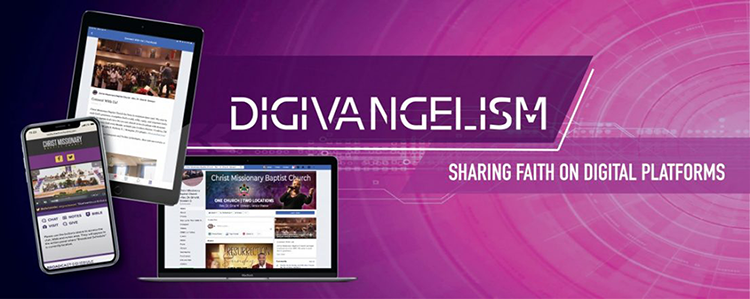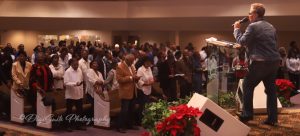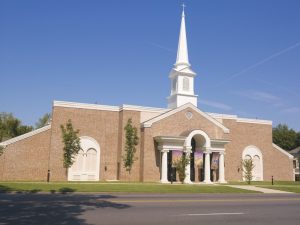The age of the printing press is gone and the world is not likely to return to an era where formative information was primarily consumed via printed text. No. Today, people consume their information by engaging and interacting with some form of digital media and technology. If we want to know the latest news, then we turn on our TVs or scroll through our Twitter[1]feeds. When the rent or mortgage is due, the majority of us don’t drive to the post office to drop a payment in the mailbox; rather, we log in online for quick and easy access to our account.
This is the era we live in; it is a digital era. The magnitude by which digital technology has been interwoven into the fabric of society can make it difficult for one to grasp the idea of living life without it. It has made and continues to make an indelible impact on humanity, and its advancements are not likely to cease in the coming years. This is not a phase. The digital age is here to stay.
The Problem
While the use of digital technology in the world and even in the lives of Christians is ascending, church attendance across America is descending. And while church attendance drops, the number of the churchless (a person who has not attended a Christian church service, other than a special event such as a wedding or funeral, at any time during the past six months) is rising.[2] Christ Missionary Baptist Church (CMBC) is a microcosm of the macrocosm having experienced a decline in its worship attendance much like other churches across America.
CMBC offers two Sunday morning worship services each week, and in 2015, we averaged 528 parishioners for both services. However, in 2018, that number declined to 418 parishioners per week. The noticeable decline in attendance over the course of 3 years ignited a desire within CMBC to evaluate how it could potentially reach a population of people who were no longer entering its doors. While there was a decline in CMBC’s attendance and church attendance across the U.S., there was one place where people were congregating every day: social media. “In fact, American adults spend over 11 hours per day listening to, watching, reading or generally interacting with media. Digital usage also continues to play a growing role with the adult U.S. consumer. Digital platforms—think computers, smartphones and tablets—have become a major catalyst for this frequent content exposure.”[3]
Those the Church is seeking to engage and even convert, are sitting at their work desks, in coffee houses, or in the comfort of their homes with an electronic device at their disposal, perusing through digital airspace, and they are doing it at an astounding rate. The average consumer spends nearly half of their day interacting with digital media. “We’re facing one of the largest shifts in human communication in the history of the world. This is not hyperbole. Social media has caused literally every societal building block to adapt. Social media is a small, tip-of-the-iceberg, visible manifestation of the change we’re facing.”[4] If the world has experienced a communication shift, one could stand to reason that the church should also evaluate how it communicates the most important message of all time: the Gospel.
DigiVangelism
CMBC had the necessary resources to enable her to take full advantage of today’s latest technology and digital platforms. However, sharing faith and the Gospel online in a manner that intentionally engaged Christians and the churchless populations was a challenge still to be overcome. We assessed how we might use the digital platforms at our disposal to share faith messages beyond Sunday morning worship services. After a period of assessment of the problem and possible solutions to address it, DigiVangelism was term that best described what this project was seeking to do.
I use the term DigiVangelism to express the process by which CMBC (as well as other churches) can use digital platforms in evangelistic ways for the advancement of God’s kingdom. In response to the decline in church attendance across America and in my own ministry context, this doctoral project gave birth to a five-part, video-based series which captured parishioners from CMBC sharing their testimonies of faith. The videos exceed no more than 60 seconds worth of content and became known as The 60 Second Faith Project.
The 60 Second Faith Project
The 60 Second Faith Project served as an innovative tool for church revitalization and evangelism. The project’s primary goal was to revitalize Christians, giving them a sense of renewal in their faith in God, and to evangelize the churchless by igniting a deep desire within them to know Christ. Facebook, which houses CMBC’s largest digital audience with over 7,100 followers, was used as the medium for disseminating these testimonies of faith. Using Facebook as the medium for The 60 Faith Project was a strategizing decision as it could potentially increase our reach, being that it is one of the largest digital platforms in the world with an estimated 2.27 billion monthly active users.[5]
By purposefully engaging Christians and the churchless population, The 60 Faith Project hoped to inspire and motivate them to cultivate a deeper relationship with Christ and become active[6]participants within the community of faith at CMBC. The primary goal was not only to share the Gospel but to share it through the lens of parishioners who know what it means to wrestle with faith and culture. We wanted to share real messages from real people in hopes of making a real connection. The participants were asked to elaborate on their faith by focusing on the following two statements: 1.) Since I have come in contact with Jesus, my life has changed in the following way and 2.) Being a part of this (CMBC) community of faith has impacted/changed my life in the following way. The following is a testimony of faith shared on social media from The 60 Second Faith Project.
Filming
The 60 Second Faith Project was captured and produced using professional equipment due to the quality I wanted to achieve. However, The 60 Faith Project could have been recorded using the average modern day smartphone which comes equipped with high quality cameras. The ability to capture interviews on smartphones makes The 60 Second Faith Project a portable and innovative way for churches to share their faith, testimonies and the Gospel on various digital platforms.
Project Results
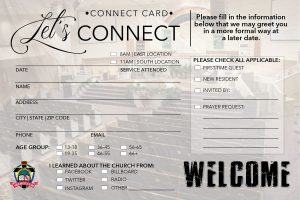 One of the ways CMBC measured the effectiveness of this project was by monitoring and reviewing its connect cards.[7] The connect cards provide pertinent information regarding why visitors visit CMBC. Over a 6 month period (August 2018 – January 2019), the connect cards reveal that CMBC had 73 visitors, and when asked how they heard about CMBC, no one had learned about CMBC via any social media outlets. However, this did not mean that the project was ineffective. While no one appeared to have visited CMBC based on their interaction with the ministry via social media or The 60 Second Faith Project, based on the comments and interaction with the videos, the project and the Gospel message was received. It received over 6,203 views and 92 shares.[8] This project reached beyond a Sunday morning worship experience, and it met people where they are.
One of the ways CMBC measured the effectiveness of this project was by monitoring and reviewing its connect cards.[7] The connect cards provide pertinent information regarding why visitors visit CMBC. Over a 6 month period (August 2018 – January 2019), the connect cards reveal that CMBC had 73 visitors, and when asked how they heard about CMBC, no one had learned about CMBC via any social media outlets. However, this did not mean that the project was ineffective. While no one appeared to have visited CMBC based on their interaction with the ministry via social media or The 60 Second Faith Project, based on the comments and interaction with the videos, the project and the Gospel message was received. It received over 6,203 views and 92 shares.[8] This project reached beyond a Sunday morning worship experience, and it met people where they are.
These results speak to the power of an online community. Many of the comments, shares, and likes that the videos received were evidence that the viewers were connecting not only with the content but also with the people who were sharing their testimonies. While the content that we share online may not always result in an increase in a church’s physical attendance, it can help to cultivate and foster online community and therefore, enable a church to expand its reach.
The 60 Second Faith Project was a seed planted into good soil and “a good seed always produces good harvest. Social media marketing is a seed that takes time to cultivate but eventually produces sweet, abundant and satisfying fruit for all the labor that goes into it.”[9]
New Wine, New Wineskins
So where does this leave CMBC, and how can this impact the Church? It leaves CMBC and the Church with an incredible opportunity to share the Gospel digitally in innovative ways. Plainly stated, tools used to evangelize, and even disciple, must include the use of digital platforms, and DigiVangelism seeks to achieve exactly that. If people are online, churches should be online too. Consumer markets are overly saturated with digital media and our homes are voice-controlled by it, but our churches can sometimes find it difficult to integrate it into its ministries. The Church must acknowledge that ‘new wine’ or new ways of communicating demand new wineskins. It is incumbent upon the Church to embrace new forms of communication in order to give its message greater potential for greater reach.
The next big shift in communication is not on the way, but it is already here. “The world of the twenty-first century, however, finds itself in one of the fastest evolving communication cultures ever; it is known as the digital age. The medium upon which communication within the digital age is conveyed can change in an instant,”[10] and the church must be prepared for this change. A church that is  connected via digital platforms is a church that has the capacity to know what is happening in the world, in their communities and in the lives of their parishioners. In fact, it is safe to assume that if Jesus had access to social media and the technology that we have access to, it would have impacted His ministry in unfathomable ways.
connected via digital platforms is a church that has the capacity to know what is happening in the world, in their communities and in the lives of their parishioners. In fact, it is safe to assume that if Jesus had access to social media and the technology that we have access to, it would have impacted His ministry in unfathomable ways.
Considering the disciples’ limitations and the age in which we now live, the Church must not shy away from exploring innovative ways to live out its call to make disciples of all nations (Matt. 28:19). With the invention of the world wide web, this process no longer has to entail leaving one country and traveling thousands of miles to the next in order to evangelize. Rather, digital platforms such as Facebook, Twitter, YouTube, and Instagram have made it possible to share the message of Jesus Christ within seconds. “Today, with social media and technology, we can go to any place without actually being there in person. Churches and ministers can preach in one location and deliver that message to other nations using technologies like video or audio streaming and live video on social media.”[11]
The use of digital platforms is almost impossible to avoid when considering modern day discipling because that’s where the disciples are; they are connected and roaming through digital airspace. Social media is equivalent to the marketplace of Jesus’ times. The marketplace was were the people were and where Jesus exercised His ministry. One could only imagine how Jesus’ ministry would have been affected had He had access to these mediums of communication. DigiVangelism is about sharing the Gospel and connecting digitally with disciples and non-disciples alike. “With literally hundreds of millions of people around the world using Social Media, it has now become imperative that we use these tools to share the Gospel. When Christ told the church to reach the world, they did not have the tools to make sure everyone in the world heard the Gospel. We do!”[12]
A Bidding War
Truthfully speaking, technology is so heavily integrated into our lives that we suffer from information overload and attention deficit disorder. The Church enters an invisible bidding war, vying for the attention of Christians and the churchless. But the churchless are not going to simply give the Church their undivided attention; rather, churches must take the necessary measures to reach this population by extending the incarnational witness of Jesus Christ, that is the Gospel message, to digital platforms. “It’s not about a speaker or a message anymore, but rather it’s about the medium that they use for communication.”[13] For the Church, the medium that it uses to convey the Gospel message will never be greater than the message itself, but the medium is important. Social media is a free, powerful medium that provides endless opportunities for evangelism and community building. It also provides an opportunity for the Church to foster real connections even in cyberspace.
A New Kind of Parishioner
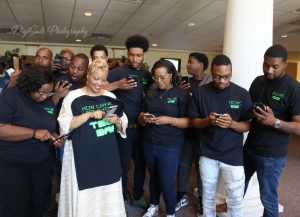 The largest population group since Boomers[14]are Millennials[15], and according to Marc Prensky, Millennials consume information differently because they are ‘Digital Natives’.[16] “As a result of this ubiquitous environment and the sheer volume of their interaction with it, today’s students [Millennials] think and process information fundamentally differently from their predecessors.”[17] There are an array of generations represented at CMBC; however, the primary generation that unites with our ministry via new membership is Millennials. According to statistics, Millennials consume their information differently. Furthermore, the generation that follows Millennials, Generation Z (born between 1997-2012), has also been reared in the digital age and will likely consume higher percentages of their information from digital sources in the future.
The largest population group since Boomers[14]are Millennials[15], and according to Marc Prensky, Millennials consume information differently because they are ‘Digital Natives’.[16] “As a result of this ubiquitous environment and the sheer volume of their interaction with it, today’s students [Millennials] think and process information fundamentally differently from their predecessors.”[17] There are an array of generations represented at CMBC; however, the primary generation that unites with our ministry via new membership is Millennials. According to statistics, Millennials consume their information differently. Furthermore, the generation that follows Millennials, Generation Z (born between 1997-2012), has also been reared in the digital age and will likely consume higher percentages of their information from digital sources in the future.
Digital technology is one of the greatest resources the world has to offer. As churches look to maintain their health and thrive in an evolving culture, revitalization of its mission, vision, and even the energy of the congregation maybe necessary. It is not enough for spiritual leadership to be energized about the mission, but the laity must be energized as well. The model of DigiVangelism presents the entire congregation with an opportunity to get involved with sharing their faith in new and innovative ways on digital platforms.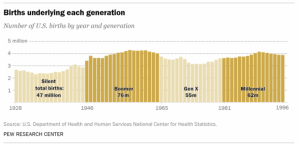
A Digital Strategy
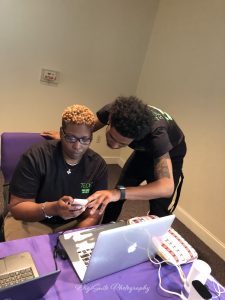 Social media presents the Church with an opportunity to connect digital media and ministry and DigiVangelism can help to establish that connection. There are significant advantages for a church that chooses to make the digital investment. That is to say, when churches make a decision to engage digital platforms without fear of losing its ‘holy’ persona or being labeled as demonic, they open themselves up to another world that may not otherwise know they exist. While the over use of technology can potentially be detrimental, with proper use, it can also be fruitful. A Church that uses social media on Sunday mornings and throughout the week opens herself up to endless possibilities for sharing the Gospel message. One of the primary ministries that can take place on digital platforms is pastoral care.
Social media presents the Church with an opportunity to connect digital media and ministry and DigiVangelism can help to establish that connection. There are significant advantages for a church that chooses to make the digital investment. That is to say, when churches make a decision to engage digital platforms without fear of losing its ‘holy’ persona or being labeled as demonic, they open themselves up to another world that may not otherwise know they exist. While the over use of technology can potentially be detrimental, with proper use, it can also be fruitful. A Church that uses social media on Sunday mornings and throughout the week opens herself up to endless possibilities for sharing the Gospel message. One of the primary ministries that can take place on digital platforms is pastoral care.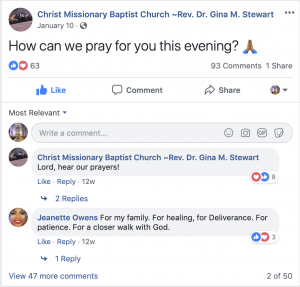 Pastors and ministers have the opportunity to check-in with members and non-members with whom they are connected via social media. “Social media is a set of tools that will exponentially increase your ability to do these key ministerial tasks. Social media is both a stethoscope, magnifying your ability to listen to your congregation and community, and a megaphone, magnifying your ability to proclaim God’s word to your community.”[18]
Pastors and ministers have the opportunity to check-in with members and non-members with whom they are connected via social media. “Social media is a set of tools that will exponentially increase your ability to do these key ministerial tasks. Social media is both a stethoscope, magnifying your ability to listen to your congregation and community, and a megaphone, magnifying your ability to proclaim God’s word to your community.”[18]
Digital Marketing Consultant, Natchi Lazarus, suggests that there are four core components needed to have an effective digital strategy. The four components are the core, the community, the content, and the channel.[19] A church seeking to make a digital imprint must understand her purpose (core), who she wants to reach (community), the message she wants to convey (content), and the medium she wants to use to convey it (the channel). A church that is serious about creating a digital footprint and advancing the Gospel message in online spaces might also consider Google Ad Grants, Facebook and Instagram ads, and radio and billboard advertisements. These digital mediums can give churches greater exposure and offer greater opportunity for greater impact.
#ShareYourFaith
 The 60 Second Faith Project served as a method for exploring how the use of digital media could be impactful for a congregation seeking to revitalize its membership and reach populations that otherwise would not enter its edifice. However, results from the project did bring clarity concerning the power of a traditional component of evangelism and faith-based community building; that is relationships. Relationships are everything. Evangelism and faith-based community building takes place and flourishes in the context of real-life relationships. Nonetheless, this does not mean that there is not a place for digital evangelistic efforts within our congregations.
The 60 Second Faith Project served as a method for exploring how the use of digital media could be impactful for a congregation seeking to revitalize its membership and reach populations that otherwise would not enter its edifice. However, results from the project did bring clarity concerning the power of a traditional component of evangelism and faith-based community building; that is relationships. Relationships are everything. Evangelism and faith-based community building takes place and flourishes in the context of real-life relationships. Nonetheless, this does not mean that there is not a place for digital evangelistic efforts within our congregations.
Inviting people to share their faith online, in particular through The 60 Second Faith Project, was an attempt to merge the traditional model of evangelism with an online experience. New research suggests that Christians are having more and more faith conversations through social media and other digital avenues. “Most encouraging, people who share their faith these days typically feel joy and are energized to share even more. Outreach begets outreach, even in our changing times.”[20] CMBC will continue to innovate and use new methods for evangelizing and reaching beyond the church edifice. The depths of the internet and social media are vast. They reach too far across the world and penetrate too deeply into the lives of people to not be considered as vital tools in a churches evangelistic plan. “That is one of the amazing benefits of social media—it has the ability to connect people anywhere instantaneously.”[21]
 CMBC plans to be intentional about forming what Episcopal priest and Millennial, Adam Thomas, calls ‘new house church’. “The new house church meets when a prayer request goes out via a Facebook status update, and within hours three dozen people are praying for the friend in the ICU. The new house church—meeting on blogs, forums, and feeds across virtual space—connects the faithful to one another.”[22] Herein lies the power of using digital platforms for ministry: a simple prayer request can travel through cyberspace waves quicker than it could through other means of communication. The Church should make every effort to extend ministry in the modern day marketplace that is social media. Doing so will help us to create ‘new house church’ that glorifies God.
CMBC plans to be intentional about forming what Episcopal priest and Millennial, Adam Thomas, calls ‘new house church’. “The new house church meets when a prayer request goes out via a Facebook status update, and within hours three dozen people are praying for the friend in the ICU. The new house church—meeting on blogs, forums, and feeds across virtual space—connects the faithful to one another.”[22] Herein lies the power of using digital platforms for ministry: a simple prayer request can travel through cyberspace waves quicker than it could through other means of communication. The Church should make every effort to extend ministry in the modern day marketplace that is social media. Doing so will help us to create ‘new house church’ that glorifies God.
____
Footnotes:
[1]Twitter is a social media network that allows users to post their thoughts, obtain the latest news and entertainment and interact with their friends, admires, or followers.
[2]George Barna and David Kinnaman, ed., Churchless: Understanding Today’s Unchurched and How to Connect with Them, (Illinois: Tyndale, 2014), 6.
[3]“Time Flies: U.S. Adults Now Spend Nearly Half A Day Interacting with Media,” Nielsen.com, (July 2018): accessed December 19, 2018, https://goo.gl/RsEP2m.
[4]Justin Wise, The Social Church: A Theology of Digital Communication, (Chicago, IL: Moody Publishers), 2014, Loc 138. Kindle Edition.
[5]Jason Abbruzzese, “Facebook Hits 2.27 Billion Monthy Active Users as Earnings Stabilize,” NbcNews.com (October 30, 2018): accessed March 31, 2019, http://j.mp/2KepSZv.
[6]An active participant would be one who attends worship service, bible study, and other ministry activities at least once or twice a month.
[7]A CMBC Connect Card is the equivalent of a visitor’s card which invites visitors to tell the church more about themselves and how they found out about the ministry.
[8]A share happens when one Facebook user shares content posted from another source or users page with their friends.
[9]Natchi Lazarus, The Connected Church: A Social Media Communication Strategy Guide for Churches, Nonprofits and Individuals in Ministry, (Nathchi Lazarus 2017), 31.
[10]Meghan S. Howard,Digital Jesus: Evangelism in a Digital and Social Media Driven Culture, (Meghan S. Howard, 2015), Loc. 1341, Kindle Edition.
[11]Lazarus, The Connected Church, 69.
[12]Joel Southerland,Digital Witness: A Social Media Primer for Churches, (Dallas, TX: Saint Paul Press 2014), 13.
[13]Natchi Lazarus, The Connected Church: A Social Media Communication Strategy Guide for Churches, Nonprofits and Individuals in Ministry, (Nathchi Lazarus 2017), 24.
[14]Boomers were born approximately between 1946-1964.
[15]Millennials were approximately born between 1981-1996.
[16]Marc Prensky defines a Digital Natives as people who are “native speakers” of the digital language of computers, video games and the Internet.
[17]Marc Prensky, “Digital Natives, Digital Immigrants,” MCB University Press, Vol. 9 No. 5 (October 2001), accessed February 27, 2019, https://goo.gl/WeuKSV.
[18]Meredith Gould, The Social Media Gospel: Sharing the Good News in New Ways, (Collegeville, Minnesota: Liturgical Press, 2015), Location 110, Kindle.
[19]Lazarus, The Connected Church, 86.
[20]Barna Group, Spiritual Conversations in the Digital Age: How Christians’ Approach to Sharing Their Faith Has Changed in 25 Years, (Carol Stream: Tyndale House Publishers, 2018), 6.
[21]Southerland, Digital Witness, 13.
[22]Adam Thomas, Digital Disciple: Real Christianity in a Virtual World, (Nashville: Abingdon Press, 2011), 34.
